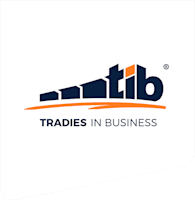Recently I was talking to a tradie who had purchased an existing business over 2 years ago.
Things were a little quiet on the job front all of a sudden. Unfortunately staff had to be let go, cash was down and team morale was low.
A quick and easy win to increase sales was needed.
He ran a report to find all the customers that had worked with the old owners of the business but had not engaged his services as the new owner in over 2 years.
Brilliant!
Reengaging old customers is some of the easiest low-hanging fruit when generating new inquiries for a business.
I was excited to hear the results.
The Tradie went on to explain how he was currently cleansing the database of over 2000 entries to ‘sort them out’. This work had so far resulted in 1200 active contacts, ready to go.
Awesome!
And then I saw the problem…
Firstly, he was waiting until he had finished sorting out the entire database before taking action.
From there the plan was to send each contact a letter in the mail explaining the change of ownership, followed up by a personal phone call from himself. Yes, all 1200 of them.
Let’s do some quick maths.
Say it took him 5 minutes on average to call every customer. That’s 100 hours of his time multiplied by his hourly rate of $88 per hour (assuming he even found 100 hours). That’s a cost of $8,800 plus postage of $1,200. Suddenly, sending out some letters to old customers became a $10,000+ major marketing campaign.
Gold stars to our friend for wanting to make such a personal connection with past customers. This would be fantastic in an ideal world.
Instead, what I suggested to get runs on the board as quickly and cheaply as possible was this:
- Rather than wait to finish sorting the entire database, begin contacting each of the 1,200 past customers he had already sorted. Time is of the essence. He can then test and measure the results before sending to the rest of the database.
- Look to send an email instead of posting a letter. This will naturally cleanse the email database as well as cost nothing and in a fraction of the time.
- Include a helpful article as well as an irresistible special offer for a limited time. The key here is to create scarcity so prospects take immediate action. He could also try testing different offers to different sections of the database and see which offer converts best.
- From there he can choose to focus his phone calls on those people who have actually opened the email but not booked. Now he is calling a warm lead with a higher chance of conversion rather than cold, old lead.
What we can learn from is that we often make things much harder than they really need to be.
Perhaps we self sabotage and make things more complex because making excuses is easier than taking action.
At least if we don’t try we don’t fail right?
Don’t strive for perfection.
Or wait till it’s ‘just right’.
There will never be a more perfect time than right now.
Let action be your research.
Just start and take imperfect action.

